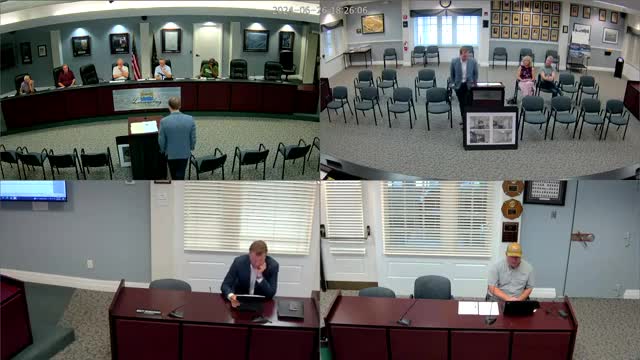Proposed four story building sparks zoning debate
June 27, 2024 | Lawrenceburg City, Dearborn County, Indiana

This article was created by AI summarizing key points discussed. AI makes mistakes, so for full details and context, please refer to the video of the full meeting. Please report any errors so we can fix them. Report an error »

In a recent government meeting, discussions centered around proposed changes to residential building codes and variances in Lawrenceburg, focusing on minimum square footage requirements, building height, side yard setbacks, and parking regulations.
The meeting began with a review of current residential classifications, where officials noted that the minimum square footage for a one-bedroom unit is set at 700 square feet, while two-bedroom units require at least 900 square feet. These standards apply to multifamily developments in the downtown area.
A significant point of discussion was a request for a variance to increase the maximum building height from three stories and 40 feet to four stories and 48 feet. Officials acknowledged that while there are existing four-story buildings in the area, such as Ivy Tech and the casino parking garage, any new construction would still need to pass through the site plan review process, which includes safety assessments and geotechnical evaluations.
Concerns were raised regarding the historical prohibition of buildings exceeding 40 feet, with officials citing past recommendations based on the town's structural integrity. However, they noted that the proposed zoning changes could allow for taller buildings in the future, aligning with the evolving development patterns.
The meeting also addressed side yard setbacks, with a proposal to reduce the required distance from 50 feet to 10 feet due to the narrowness of the site and the topography of the area. This adjustment aims to facilitate effective building placement while ensuring adequate separation from neighboring properties.
Parking requirements were another focal point, as the applicant requested a reduction from two unenclosed parking spaces per unit to one. The rationale behind this request is based on observed underutilization of parking spaces in similar developments, particularly for senior housing. Officials expressed confidence that the proposed parking layout would accommodate residents and visitors adequately, with the potential for additional spaces if necessary.
Overall, the discussions highlighted a balance between accommodating new developments and maintaining community standards, with further evaluations and approvals required before any changes can be implemented.
The meeting began with a review of current residential classifications, where officials noted that the minimum square footage for a one-bedroom unit is set at 700 square feet, while two-bedroom units require at least 900 square feet. These standards apply to multifamily developments in the downtown area.
A significant point of discussion was a request for a variance to increase the maximum building height from three stories and 40 feet to four stories and 48 feet. Officials acknowledged that while there are existing four-story buildings in the area, such as Ivy Tech and the casino parking garage, any new construction would still need to pass through the site plan review process, which includes safety assessments and geotechnical evaluations.
Concerns were raised regarding the historical prohibition of buildings exceeding 40 feet, with officials citing past recommendations based on the town's structural integrity. However, they noted that the proposed zoning changes could allow for taller buildings in the future, aligning with the evolving development patterns.
The meeting also addressed side yard setbacks, with a proposal to reduce the required distance from 50 feet to 10 feet due to the narrowness of the site and the topography of the area. This adjustment aims to facilitate effective building placement while ensuring adequate separation from neighboring properties.
Parking requirements were another focal point, as the applicant requested a reduction from two unenclosed parking spaces per unit to one. The rationale behind this request is based on observed underutilization of parking spaces in similar developments, particularly for senior housing. Officials expressed confidence that the proposed parking layout would accommodate residents and visitors adequately, with the potential for additional spaces if necessary.
Overall, the discussions highlighted a balance between accommodating new developments and maintaining community standards, with further evaluations and approvals required before any changes can be implemented.
View full meeting
This article is based on a recent meeting—watch the full video and explore the complete transcript for deeper insights into the discussion.
View full meeting
